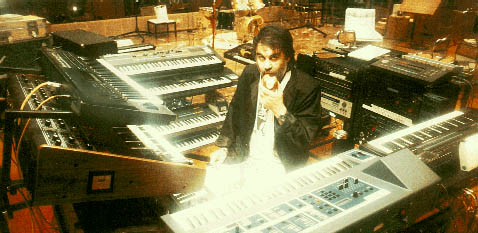Sorry, it’s that time of year again !
If there’s one thing that I have been strongly aware of this year it’s the fact that I have not been blogging much. I have just been so busy and while I do feel a modicum of guilt for ignoring it I have to also be grateful for the fact that there are very good reasons for this.
My most abiding memory from this year will be the number of workshops that I have been privileged to run. From the end of March to the end of October my feet barely touched the ground. It really has been a most extraordinary year and it has been my pleasure to work with over 70 people this year on workshops and 1:1s. Thank you all for coming. Were it that I could be half as busy again next year !! As it is I already have bookings for 10 guests. I hope the weather co-operates !
The work with Peak Gallery has been very good this year. As well as hosting a number of excellent exhibitions we have also contributed to two ourselves. ‘Re-versed’ featured the poetry of Helen Mort illustrated by our photographs while ‘Samuel Rayner’s Haddon Hall – Revisited’ featured photographs taken by us of Haddon Hall echoing the work of Samuel Rayner, who illustrated the Hall in the mid 19th century using very early lithography. ‘Re-versed’ is currently on tour around the county libraries and will exhibit at Edale visitor centre in the new year.
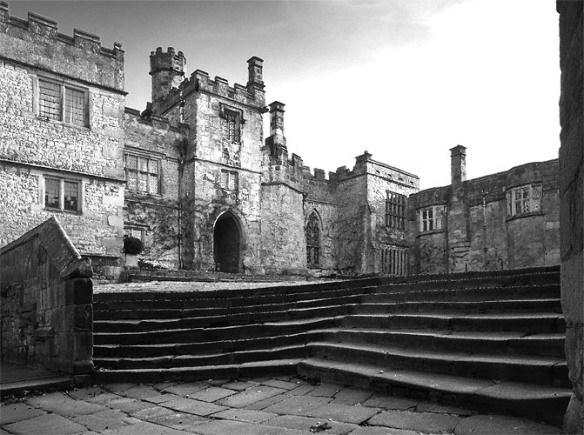
Haddon Hall from the courtyard by Chris Gilbert
I have to also mention at this point that I was shortlisted for another national photography competition this year and while the ‘shortlist’ for Outdoor Photographer of the Year was actually a very long list it was still pleasing to be on it. Particularly given that my work has been somewhat compromised this year by other commitments.
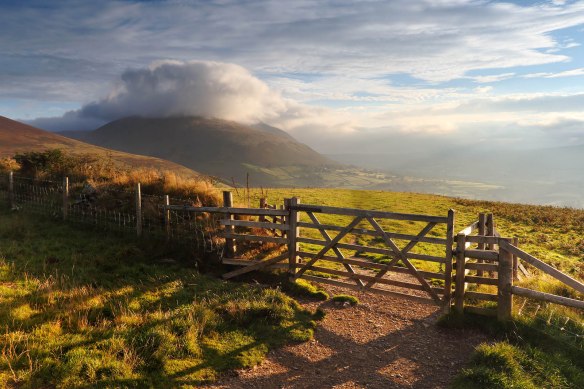
Blencathra from Latrigg – OPOTY shortlist
Photographically my year has been dominated by the needs of the ‘Guide to Photographing the Peak District’, on which I am working on behalf of FotoVIEW in conjunction with fellow Peak District resident Mick Ryan, who also works for FotoVIEW. I must confess I have found it something of a double-edged sword. The book is deliberately ambitious and has required considerable effort to catalogue and while the exertions have been without exception brilliant experiences it does mean that my efforts have been directed at specific needs for content. Very little of my work this year has been freestyle and without direction. Interestingly I felt a very strong urge to change my style and explore new formats. Although this is undoubtedly a good thing the timing could be better ! The book needs to be illustrated and now is not the time to be venturing into alternate depictions. That will come in time. After the book is published I will be thinking carefully about where I want to go visually.
So on with the visuals. As always there is tension between the needs of my annual Calendar and my review of the year. I try to not replicate the contents of one when doing the other. Thankfully this year has been so productive and has created so many unusual images that there is much to choose from and few of these got anywhere near consideration for the calendar !
January
This was a cold, cold month with lots of snow and there were many candidate images, one of which got me the most views and Likes on Facebook of any image that I had posted to that point but I have chosen this one.
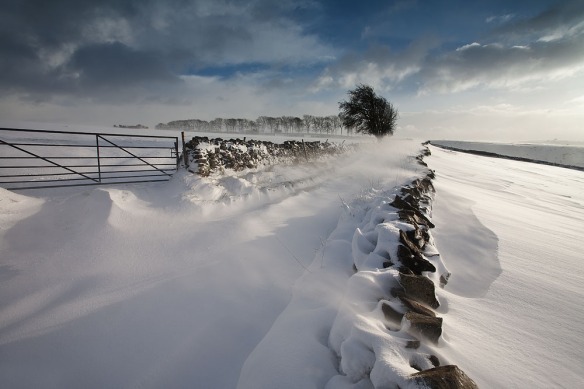
January 2015, on Lunch Lane
I like the energy in this one. It is taken just around the corner from my house on a day when we were snowed in and the only way to do any photography was to walk to it. It was bitterly cold and I think that comes over in the shot. Techincally it was quite tricky as well and turning out such a good shot under the circumstances was very satisfying. You must always be mindful of projecting too much of the experience into your own interpretation of a shot. The viewer does not share the experience of execution. The image has to be valid entirely within the frame and must not rely on the experiential dimension to make it so.
February
The snow continued into February and even once it had gone the month remained very cold. There were some days of very good light, however, and good light in February can generate some outstanding photography. I also got a new camera. The first in 8 years. As fond of the 5D1 as I was it simply wan’t performing any more and it had got to the stage where just about everyone who came to work with me had a better camera than me. It was embarassing ! February’s image is actually a revisit to a location who’s initial visit predated the 5D so it was great to get back here with the 6D.
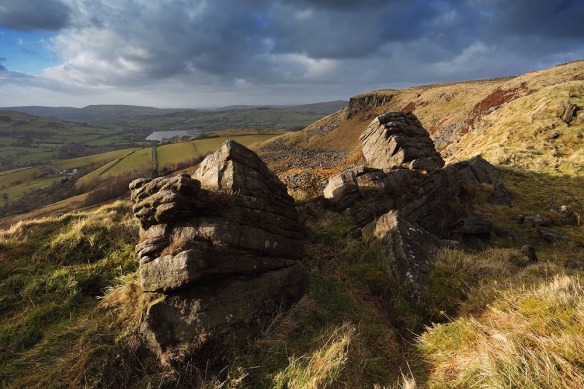
This is taken on the edge of Combs to the west of Buxton. A fabulous location.
March
I’m staying over in the west of the Peak District for March and this shot of Windgather. Again a location that was first visited in the dim and distant past and which was on the list of locations to revisit for the book. It was blowing an absolute hoolie and I almost ruined the shot by not having taken the time to investigate how to get the best out of the new camera.
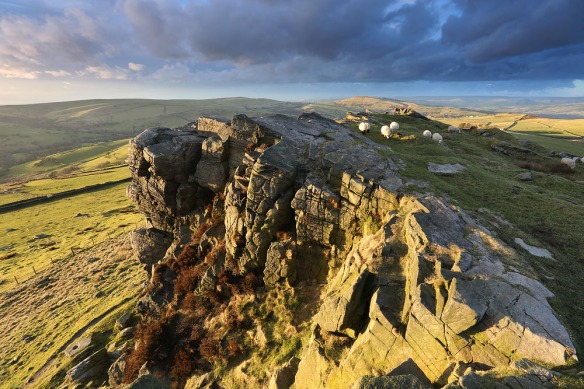
After this I took the time to set the camera up on a rig and do some experiments to see precisely where the best settings for the camera are. It is sad to say that the 6D seems to not be as good in many respects as the 5D1. The dynamic range is significantly better and the Autofocus is startling but in many respects the 5D1 produced better images. I should perhaps move to a 5D3 (or whatever the latest incarnation of the 5 is as and when I can afford to it).
April
I seem to have spent an inordinate amout of time this year in Bolehill Quarry, which in itself is not a problem at all as it is a superb place for photographic meditation. It is a bit like a set for a film. Quite surreal. It is also a very popular climbing location and the following image is of what the climbing community call Pool Wall.
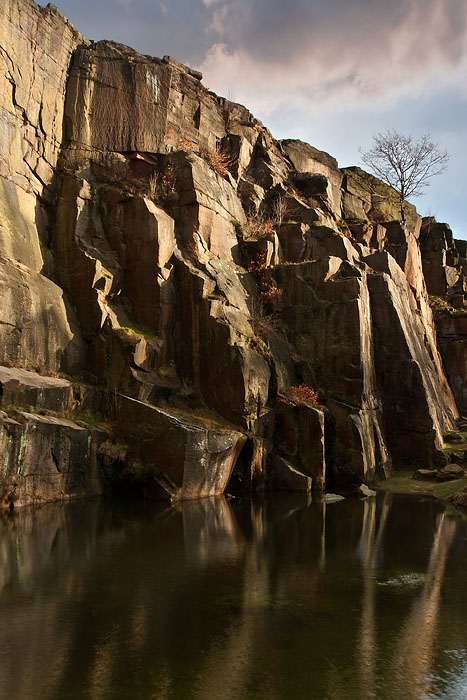
Pool Wall, Bolehill Quarry
The pool is now significantly diminished, having sprung a leak but the image still pleases me and Bolehill has many, many other qualities that keep it a superb place to do photography.
May
May was a cold, stormy month with winter occasionally coming back to remind everyone that it wasn’t that far in the past. Even so there was a lot of good light. It was also our annual pilgrimage to Scotland, where we found ourselves once again on Skye and I spent a very enjoyable couple of hours exploring the gorges of the Allt Na Dunaiche, in the shadow of Blaven. Some of the spots that I found came with an element of risk. It wouldn’t have taken much rainfall on the slopes of the mountain above to dump a metre or so of fast-moving water on the rocks where I took this shot. Controlled risk is often very productive.
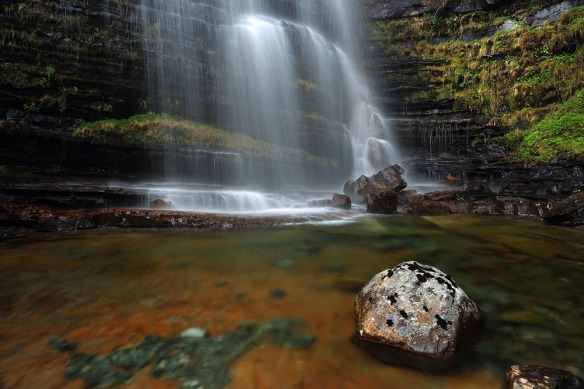
June
I have Mick to thank for June’s shot. We had both been out scouting locations around the Wye Valley and he’d noticed this attractive collection of hills and valleys around the bottom of Great Rocks Dale so I popped over one evening when it looked like the light would co-operate and the results were very pleasing. I do like shooting into the light this way and have developed a number of techniques to make the camera cope better with the required dynamic range. This one did make it into next year’s calendar !
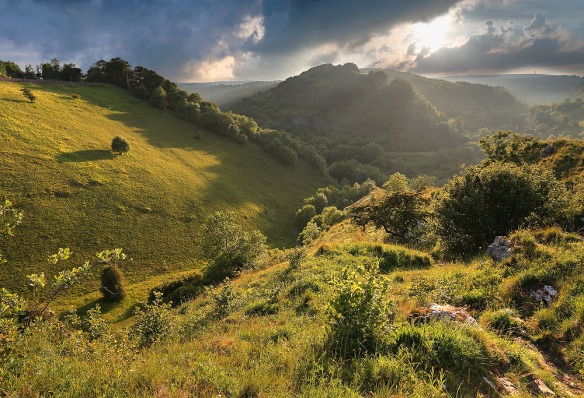
July
In July the summer really started properly, with some very warm days. The long evenings also mean that to get the best of the evening light you have to stay out late. Mick and I took a long walk out one balmy evening to bag a location on a remote corner of Kinder Scout that had been on the list for long time. It was a very good one to get under such excellent conditions. Another shot that found its way into the calendar.
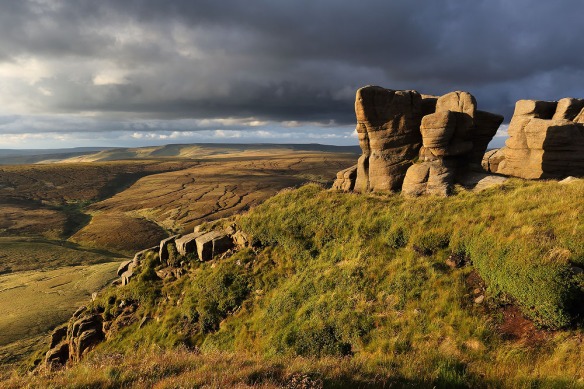
August
The hot weather of the summer inevitably descended into a rapid succession of heavy storms in August but the conditions were consistently excellent, with some superb atmospherics. This is a shot from one sultry, stormy evening when Mick and I ventured out onto some remote moorlands. We walked out onto the moors in a terrific thunderstorm and after it had past the moors erupted into an ethereal mistiness that was eventually lit by some excellent late sun. Quite an experience.
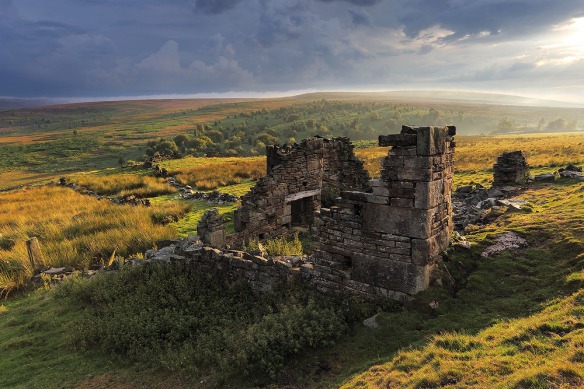
September
The weather calmed down in September and returned to a very comfortable and settled, sultry warmth – which is why Jane and I chose to go to the north coast of Scotland where the weather was absolutely rubbish ! The week was not a write-off however and in between the storms there was some great light, like on this day at Talmine. This is probably my favourite photograph out of what has been an excellent year for me with the camera.
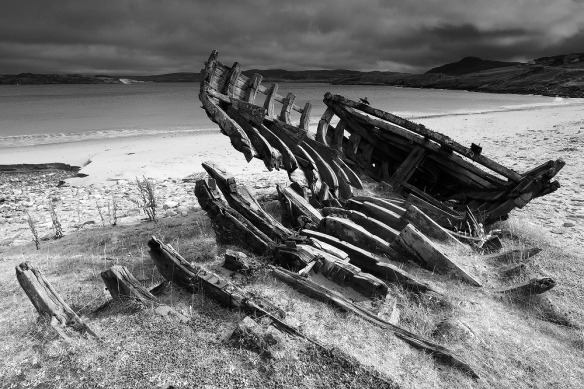
October
As is so often the case in the Peak District October was superb. Settled, dry and immensely colourful but it was a trip to the Lake District with the Ockbrook Imaging Club that produced this month’s image.
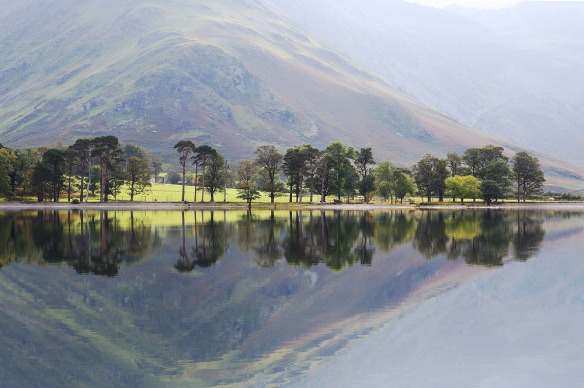
Buttermere Reflections
It’s a cliche, of course. Buttermere on a calm morning is a landscape photographer’s dream but being there on that weekend at that time of year and getting that weather was just such an extraordinary fluke. A coincidence of factors worthy of inclusion in the list.
November
It’s not too long in the past so you’ll remember that November’s weather was actually incredibly mild, with temperatures and sunshine more reminiscent of September. OK it all went pear-shaped toward the end and the weather collapsed in a sequence of fierce storms but for a little while back there it was unbeleivably mild. November’s image is one of those where I have to be careful to not let my own affections for the circumstances outweigh the visual value of the image. This was a hard-won shot under trying conditions. I hope that when I come to look at it again a few years down the line and see it for its artistic merits only it continues to please me.
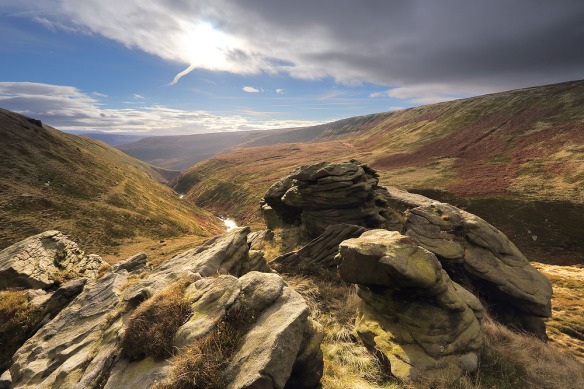
December
I’ve probably got one more day this year to bag another December image but I’ll draw a line under the year at this point for the sake of my blog. The weather this month has been dreadful. The succession of storms have delivered some amazing and dramatic conditions but they have been interspersed with the occasional patches of incredible light, as evidenced by December’s shot from Carl Wark.
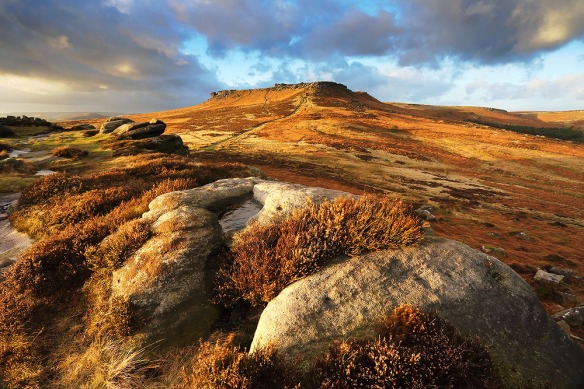
So there we have it. Photographically a very, very pleasing year for me with the camera. It will be very interesting to see what happens next year. Photography is definitely changing – rapidly – and I’m not really sure how it will affect me or how the changes will manifest themselves. I do believe very strongly in the Helsinki Bus Station Theory as applied to photography and I will endeavour to source the changes internally rather than externally. We’ll see. Thank you for being with me this year and apologies for the relative dearth of blogging. I hope to be able to report more frequently next year.
Good health to you all and success in all your endeavours in 2016.

